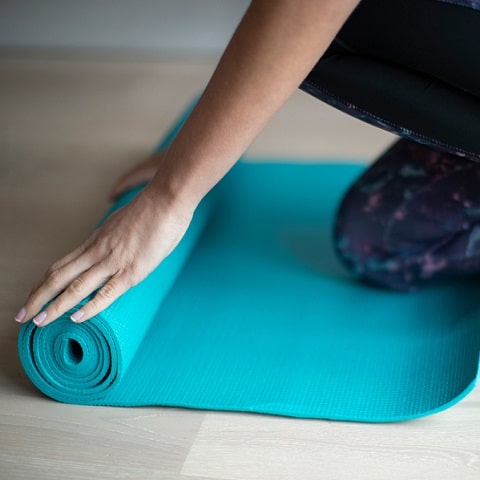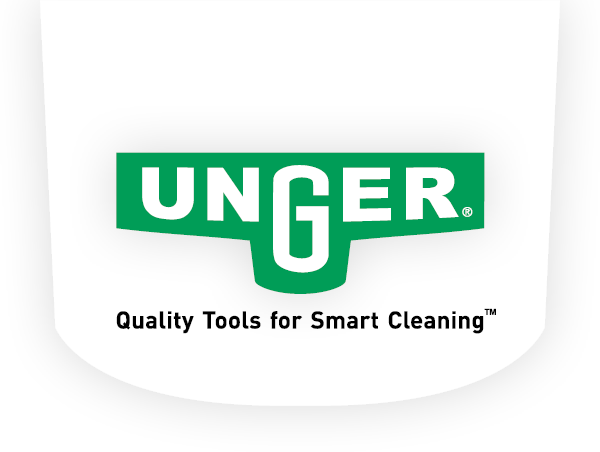NEW! Powerful Nano Filtration with Unger's HydroPower® Nano See The Product

Why Effective Commercial Floor Cleaning is Critical to Combating Infectious Disease Spread
We have more contact with floors on a daily basis, both directly and indirectly, than most people realize. Even if you don’t touch floors directly, you can frequently make indirect contact through the placement, whether intentional or not, of personal items on floors, such as yoga mats, backpacks and purses, shoelaces, dropped keys and pens, just for example. Every time an object has touched the floor, and we pick it up, we make indirect contact. And while a floor may appear clean, more likely than not, it’s harboring potentially harmful germs and contaminants.
In fact, the average floor has about 764 bacteria per square inch. So when you pick up a backpack from the floor, or consider the foot traffic in any given facility as occupants come and go and travel between different areas, you can easily understand how you’re accidentally spreading harmful germs from the floor to other surfaces. To combat the accidental spread of infectious diseases, especially during the COVID-19 pandemic, effective floor care is a critical component of maintaining safer, healthier facilities.
Understanding Cross-Contamination from Dirty Floors
Cross-contamination is the act of transporting germs and bacteria from one place in a facility to another. But it’s not just the building occupants that can accidentally pick up and transport contaminants – outdated floor cleaning methods and equipment can also unintentionally contribute to cross-contamination.
For instance, when wet mopping with a traditional single bucket and string mop, the mop and solution become soiled and contaminated from the first application. As dirt, grime and germs build up over time on the mop, the cleaning solution and/or disinfectant solution also becomes contaminated, lowering the effectiveness of a process implemented to remove germs and bacteria. And if this mop is stored wet, or travels to other areas of the facility, the mop begins to spread soils and potentially harmful contaminants.
This truth can be applied to a multitude of facilities and an array of floor surfaces. Below we review a few of the main environments under the microscope as facilities re-open during the pandemic.
Stopping Restroom Floor Germs from Spreading
Studies have shown that out of all the surface areas in restrooms, the floor is one of the dirtiest, because when a toilet flushes, germs and bacteria spread everywhere, including the floor. The most common types of bacteria found in any bathroom are Bacteroidaceae (bacteria from fecal matter), E.coli, streptococcus and salmonella.
According to a study conducted by Live Science, people can bring an extraordinary amount of bacteria into public restrooms. The study found that within just an hour of typical use, there were 500,000 bacterial cells found per square inch on the surfaces in the public restroom. But it’s not uncommon for restroom floors to house more than 2,000,000 bacteria per square inch.
While restrooms only take up about 5% of a facility’s footprint, the bacteria and germs within them don’t stay in that space due to the foot traffic and outdated cleaning practices. To effectively reduce cross-contamination originating from restrooms, facilities can invest in modern restroom cleaning kits that are specifically designed to limit the risk of cross-contamination through innovative tools, such as: dual chamber floor cleaning buckets, color-coded cleaning systems, microfiber mop technology and onboard wringers and scrub boards.
Helping Food Service Facilities Open and Stay Open
Restaurant patrons eat with their eyes first. Defending this notion, a recent consumer poll revealed that a dirty floor – dirt, debris, discolored grout, carpet stains – could lead 68% of patrons to immediately leave. For restaurant and food service facilities, this means that not only is floor cleaning imperative to the guest experience, but also to the overall health standards of your facility.
CDC recommendations include performing routine environmental cleaning during any virus outbreak, especially the cleaning of high touch surfaces, such as tables, chairs, floors, etc. Given the foot traffic in and out of restaurants, and staff moving between food prep and service areas, facilities will need to invest in a modern floor cleaning system that can deliver:
- An effective, hygienic level of clean that removes the maximum amount of microbes;
- A faster mopping & drying time to support more frequent floor cleaning;
- An efficient cleaning method that reduces mopping time; and
- A safer process that supports fast drying time, thus significantly minimizing slipping accidents.
Creating Healthier School Environments
Effective school cleaning protocols can enhance school and student positive self-image, but more importantly during the coronavirus pandemic, also promote overall higher academic attendance and performance. According to ISSA, 22 million school days are lost annually to the common cold and another 38 million school days are lost to Influenza. This results in teachers being absent an average of 5.3 school days each year and students being absent an average of 4.5 school days each year. Take into account the absences and/or closures due to COVID-19, and these numbers compound.
Now more than ever schools are focused on cleaning and disinfecting to combat the spread of harmful germs and viruses. Although the focus typically lies in restrooms and cafeterias when it comes to cleaning, maintaining clean floors – from the classroom to the gymnasium – are a crucial part of keeping schools clean given the risk of cross-contamination throughout the entire facility.
The most frequent bacteria hotspots in schools are considered to be tabletop surfaces, computer keyboards, and computer mouses, ranking high in levels of five bacteria: E. coli, Klebsiella, pneumonia, Streptococcus, Salmonella and Staphylococcus aureus. But add the fact that students and staff come in contact with floors daily, transferring those contaminants to these high touch surfaces, and it’s easy to understand the impact of cross-contamination involving dirty floors.
Commercial Floor Cleaning and Disinfecting Options
The danger in defining ‘clean’ is that cleanliness is usually defined by visual inspection instead of quantitative standards. Since we now know that soiled, contaminated floors harbor unseen germs that can be transmitted by direct or indirect contact, facilities need to invest in commercial floor cleaning solutions that provide a deep, effective level of clean, not just surface level cleaning.
As your own facility takes the necessary steps to ensure the safety of your property, employees, customers and visitors, we’ve provided the below guidelines to which commercial floor cleaning tools and technologies we recommend:
- Microfiber cleaning technology lowers bacteria levels by 96%
- Color coded cleaning technology significantly minimizes cross-contamination
- Dual bucket functionality has proven to effectively clean floors by preventing dirty solution from entering the cleaning process
- Disinfectant flexibility allows you to combine cleaning with disinfection when needed
